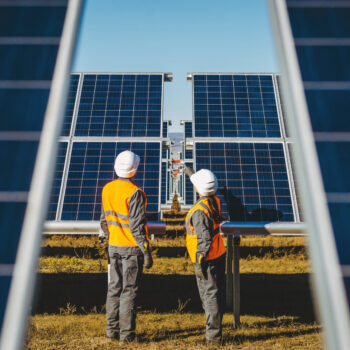As global leaders head to the G20 summit to consider solutions to the current global economic crisis, a new report released today by E3G and WWF reveals that many of the economic recovery packages being discussed are a missed opportunity in terms of stimulating a green recovery, and actually run the risk of locking the world into a high-carbon future.
Of the $1.1 trillion worth of stimulus packages analysed in this study, the “effective adjusted” climate friendly expenditure amounts to just $73 billion – a tiny share (6.6%) of the total stimulus. A recent E3G report on “Delivering a Sustainable Low Carbon Recovery” called for at least 50% of stimulus packages to be focused on climate friendly investment.
Commissioned by E3G and WWF and prepared by Ecofys and Germanwatch, the report provides the most detailed and comprehensive analysis to date of the proposed ’stimulus’ packages of five key countries – France, Germany, Italy, the UK and the US – as well as examining the package agreed by the European Union as a whole.
Summary and conclusions (abridged)
The economic recovery packages put forward by many countries amount to a large amount of money, some of which may have a beneficial impact on greening the global economy. But many packages are woefully small, few contain adequate detail for full assessment and some indeed are actually counterproductive if the aim is to move rapidly to a low carbon economy in the face of the climate crisis.
The long term impact of these packages on greenhouse gas emissions can be beneficial where governments set clear policy goals and back themwith smart investment in key sectors such as buildings, transport networks, energy grids and clean energy supply. Governments must seize this opportunity.
There is a growing recognition of the need to put climate and energy security at the core of the economic recovery, truly integrating economic and environmental issues. By responding to this need with packages that are well designed and rapidly implemented governments can accelerate the global transition to a low carbon economy and reduce the risk of another oil price spike when the recovery begins. This will also strengthen the prospects for a global climate deal in Copenhagen in December 2009.
Recent publications have compared the climate friendliness of the economic stimulus packages in various countries by calculating the low carbon share of the total package as a proportion of national GDP (reports by HSBC, 2009 and Edenhofer and Stern, 2009). In these publications fiscal measures are judged to be either climate friendly or not, solely on the basis of the area of investment such as energy efficiency or renewables.
This is useful but not adequate. It considers a dollar spent on renewable energy to be on a par with one spent on energy-efficient cars without taking into account the impact on emissions of each dollar spent. It also does not consider whether themoney is invested directly or indirectly through instruments such as tax incentives or research and development.
Likewise it does not take into account the potential negative impact of the recovery packages frominvestments that raise greenhouse gas emissions such as new fossil-fuelled power stations or building new roads.
WWF and E3G asked Ecofys and Germanwatch to develop a methodology that takes into account these considerations to give amore sophisticated picture of the climate impact of the various economic recovery packages. This has been used to evaluate the packages so far put forward by a number of countries, assessing the share and impact of the climate-friendly stimulus as well as that of new measures that will drive emissions in the wrong direction.
The result is a very mixed picture.


